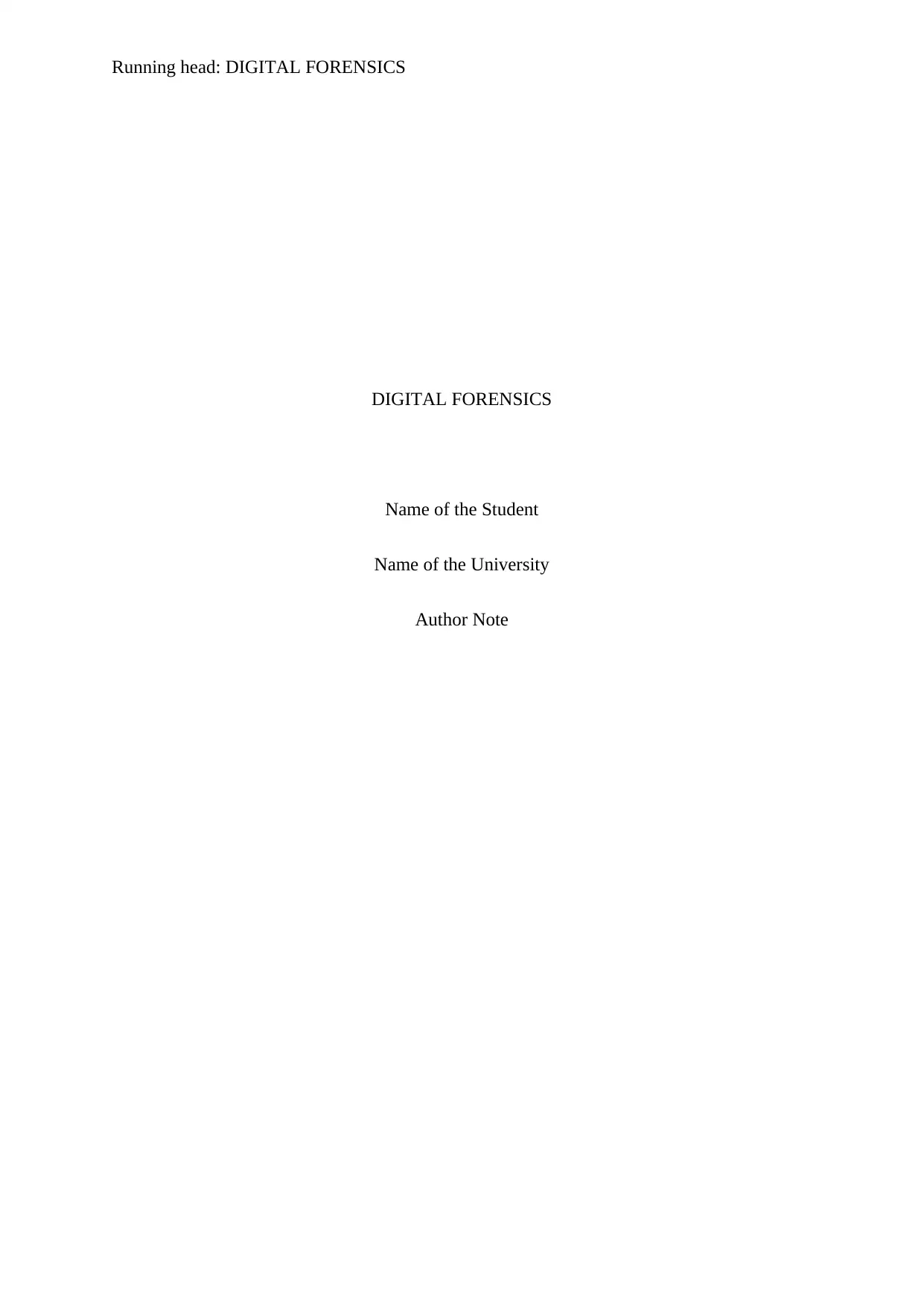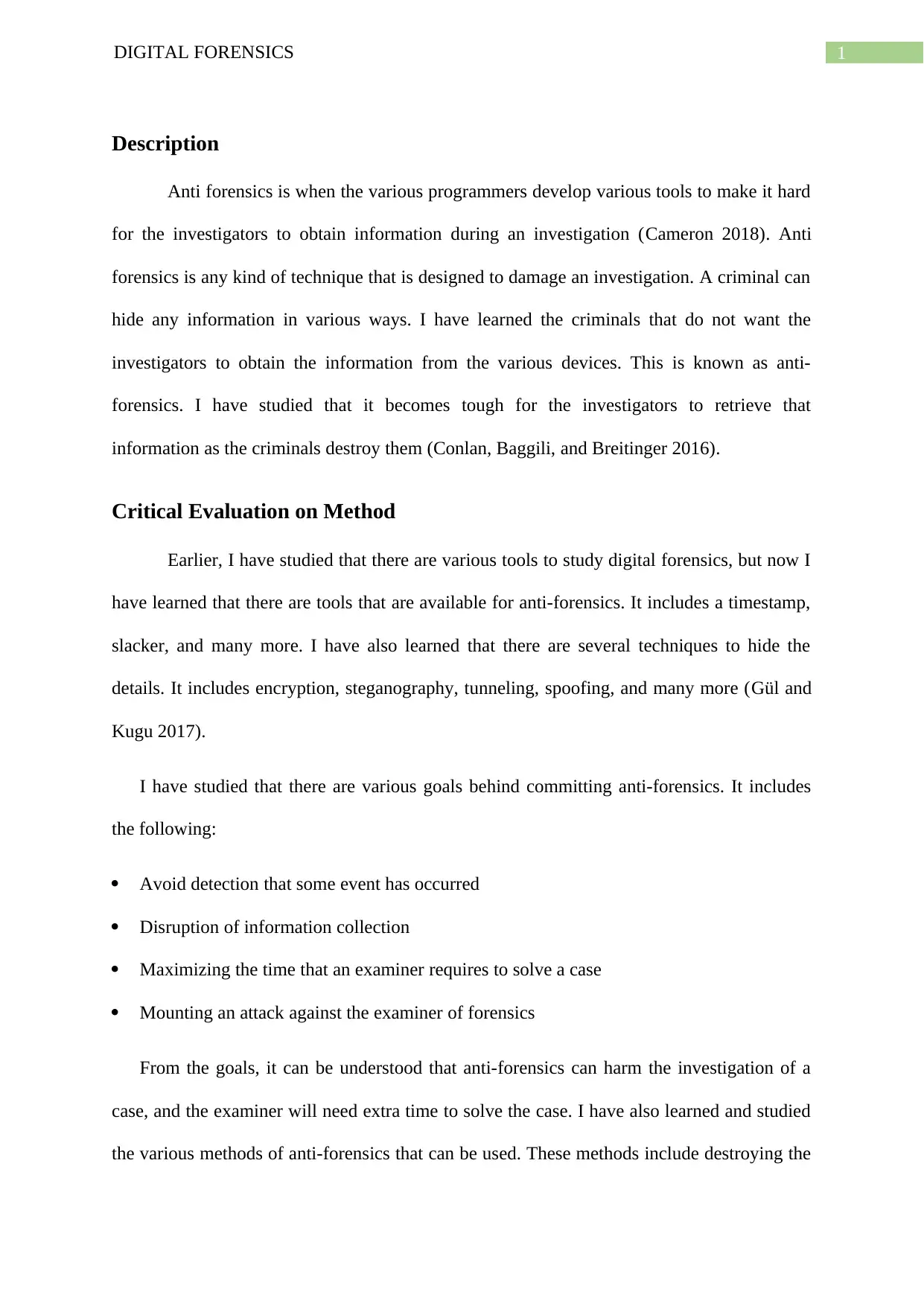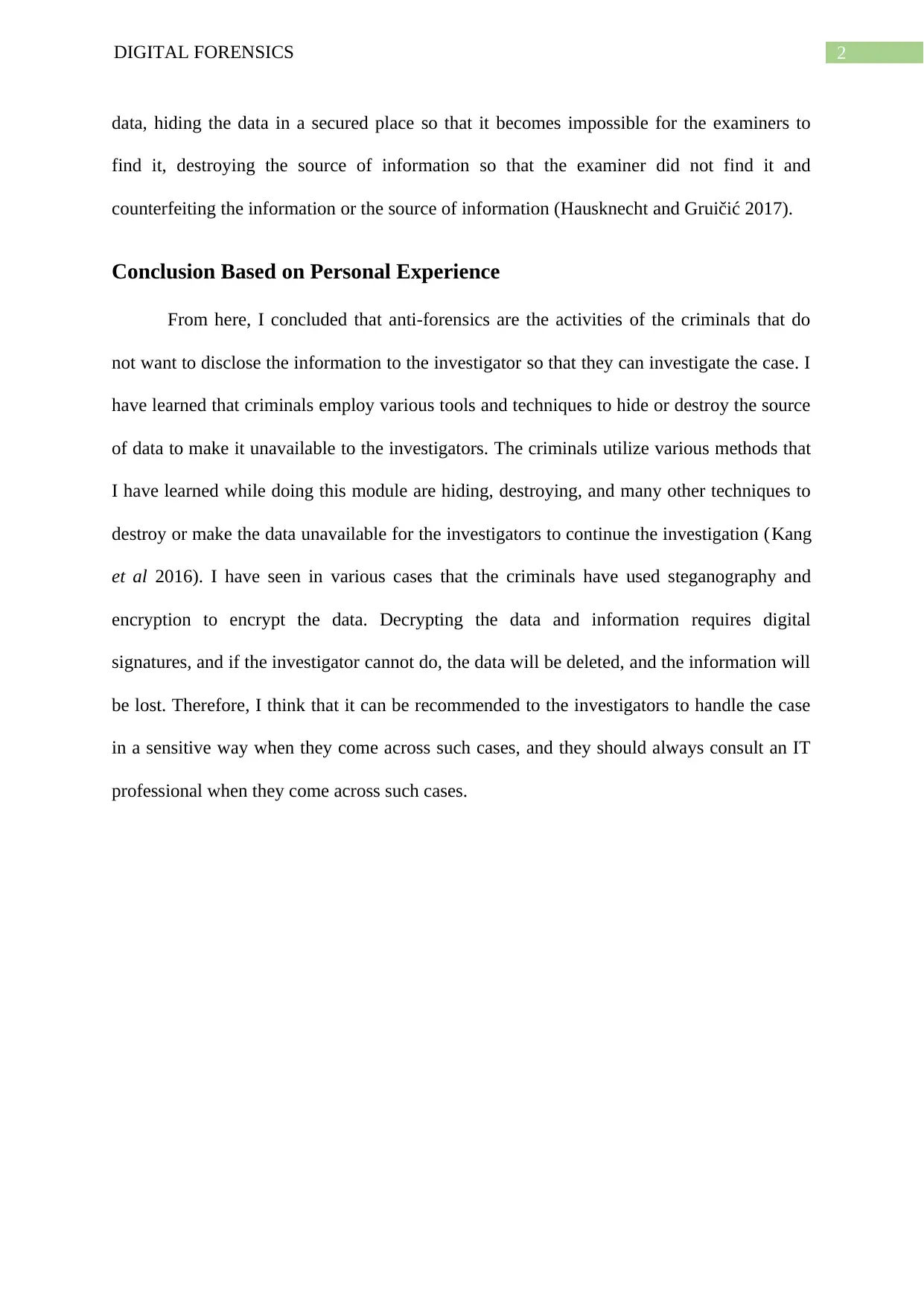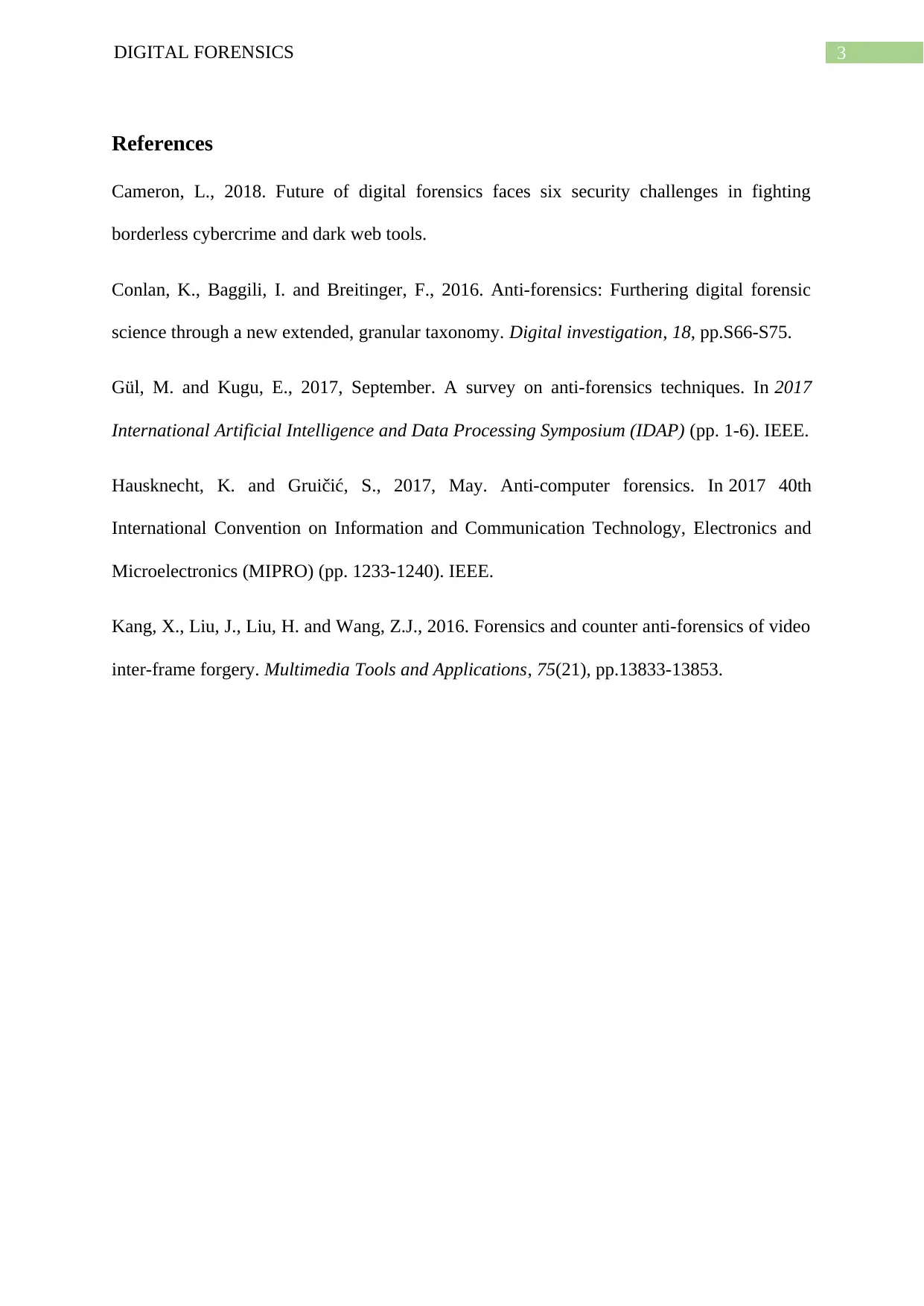University Digital Forensics Module: Personal Reflection and Learning
VerifiedAdded on 2022/09/09
|4
|729
|15
Report
AI Summary
This assignment is a reflective report on a digital forensics module, focusing on the topic of anti-forensics. The student explores the concept of anti-forensics, which involves techniques used to hinder digital investigations by hiding or destroying data. The report details the student's learning experience, including the tools and techniques used by criminals to avoid detection, disrupt information gathering, and prolong investigations. The student reflects on their understanding of data hiding methods like encryption and steganography and how these techniques impact digital forensics investigations. The report emphasizes the importance of IT professionals in handling such cases and highlights the need for investigators to be aware of anti-forensic measures. The report also references the practical sessions attended during the module, specifically the anti-forensics session. The student also discusses the goals of anti-forensics which includes avoiding detection, disrupting the collection of information, increasing the time an examiner spends on a case, and mounting an attack against the examiner.
1 out of 4











![[object Object]](/_next/static/media/star-bottom.7253800d.svg)